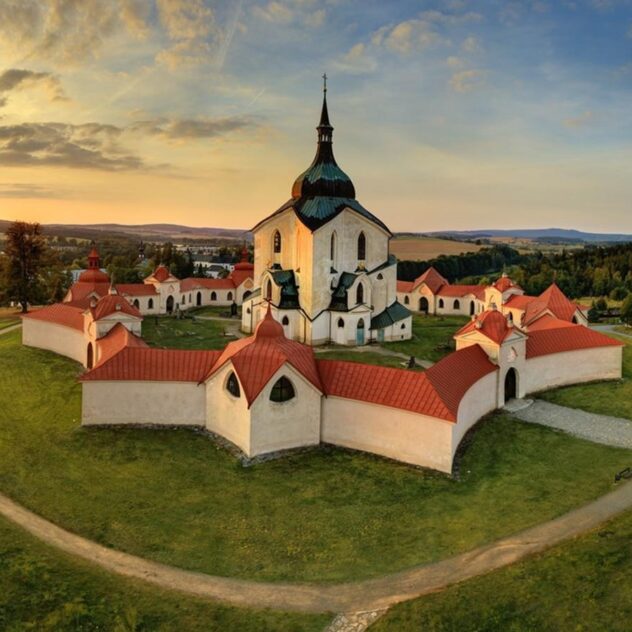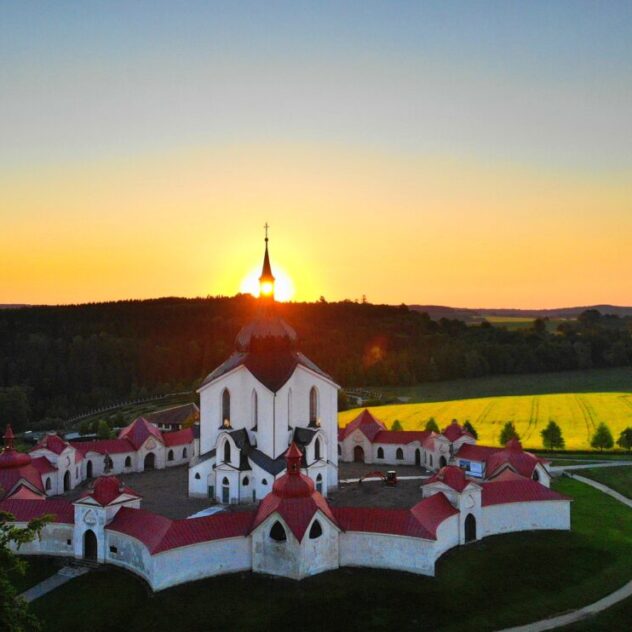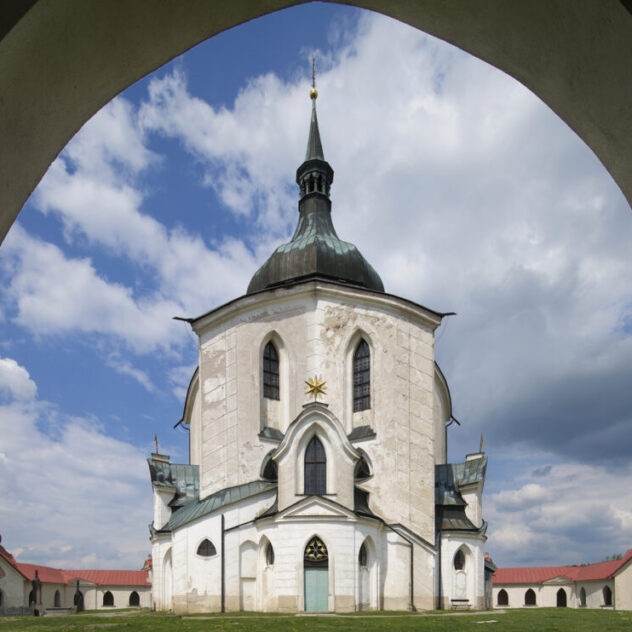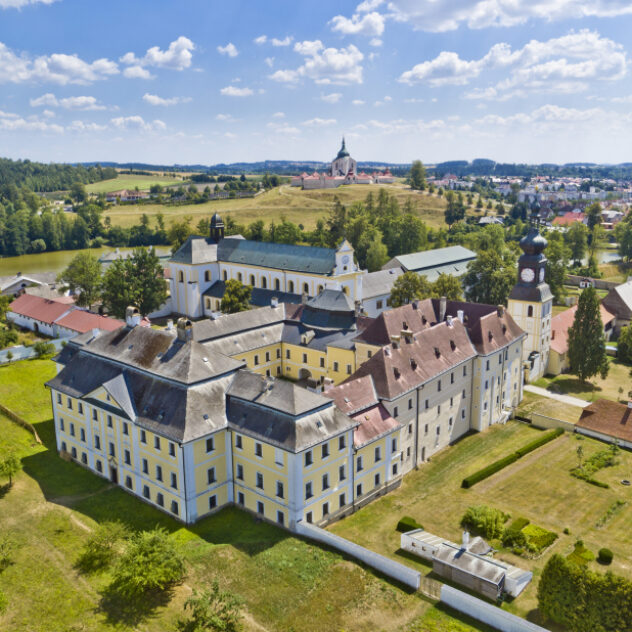Zelená Hora near Žďár nad Sázavou
Information about the pilgrimage site
The Baroque pilgrimage site of Zelená Hora is one of the Czech monuments that are on the UNESCO list of cultural monuments. This building, the work of the brilliant architect Jan Blažej Santini Aichl, is executed in a purely Baroque style. It is the result of many years of cooperation between the abbot of the Cistercian monastery in Žďár, Václav Vejmluva, and Santini. The preparatory work began in 1719 and was therefore an immediate response to the canonization of John of Nepomuk in April of that year. The construction progressed unusually fast, and the pilgrimage site was consecrated on 27 September 1722.
Abbot Vejmluva was a worshipper of John of Nepomuk even before his canonization and commissioned Santini to produce a work full of symbolism in relation to this saint. Santini conceived the project in a completely individual way, without taking into account the contemporary customs in the field of the shapes of church buildings, accepting only the contemporary view of the composition of the pilgrimage site. Santini worked not only with the symbolism of shapes (the plan of the star), numbers (5), but also with the effects of light falling through the windows. This is also related to the location in the landscape, which was chosen on an originally wooded hill. The forest was cleared and the hill renamed Green Mountain. The name refers not only to the mother monastery of the Žďár Cistercians, but also to the birthplace of Jan Nepomucký. The pilgrimage site became a dominant feature of the landscape thanks to the forest clearing. After the monastery was dissolved, however, the surrounding land was reforested and used for agriculture. This state of affairs lasted until the beginning of the 21st century.
The church on Zelená Hora has become one of the most visited places of pilgrimage. In 1784, however, there was a massive fire, when the whole area lost its roof. Subsequently, the abbot Otto Steinbach of Kranichstein asked Emperor Joseph II to destroy the monastery, which was granted. The church furnishings, including the organ, were documented and taken away.
The place of pilgrimage had been decaying for a long time, although after the First World War partial repairs were made. In 1953 the state became a co-owner of the site and the building continued to deteriorate. More extensive repairs were carried out in the 1970s and 1980s, some of which were carried out unprofessionally. Since 1994, the site has been a UNESCO World Heritage Site and all repairs are under professional supervision. In 2014, the site was handed over to the Žďár parish by the National Heritage Institute as part of the church’s restitution. The goal of the church is to return the pilgrimage site back to its original purpose. For pilgrims, information about pilgrimages and services is available on the property’s homepage.
Tourist attractions in the vicinity
Chateau Žďár nad Sázavou – the chateau is located in the vicinity of the pilgrimage site Zelená Hora.This former monastery was used as a chateau after its dissolution in 1784. Nowadays, it belongs to the Kinsky family, which has turned it into a multifunctional cultural and tourist centre. More information can be found at https://zamekzdar.cz/ .
Jihlava – the capital of the Vysočina Region was founded in the Middle Ages. In the 13th century it was an important mining town where silver was mined. In addition to the historical centre, it offers attractions such as the historical underground, the Zoo and the Water World. More information can be found at https://www.jihlava.cz/volny%2Dcas/ms-144332/p1=144332 .
Pernštejn Castle – This gothic gem is located just a few kilometres from Žďár nad Sázavou. It is currently in the care of the National Heritage Institute and offers several tours and accompanying events for the whole family. More information can be found at https://www.hrad-pernstejn.cz/cs .
The Žďár Hills Protected Landscape Area – this area provides plenty of inspiration for hiking or cycling trips for individuals and families. More information about the area can be found at https://zdarskevrchy.nature.cz/charakteristika-oblasti .
Polička – Polička is the hometown of Bohuslav Martinů, the Czech composer of modern classical music. The town’s website offers other attractions in and around the town, such as a trip to Svojanov Castle https://www.policka.org/info/o-meste/pamatky/ .
Other tourist attractions in the area can be found on the website:
Accommodation
- Special accommodation for pilgrims is not currently available
- This area offers a large amount of commercial accommodation. The most interesting is the accommodation directly in the castle Žďár na Sázavou https://zamekzdar.cz/ubytovani-na-zamku/
Availability
By car
The pilgrimage site is accessible by car, the car park is located in front of one of the entrances to the pilgrimage site.
By public transport
The public transport infrastructure is very good. There is a bus connection to Žďár nad Sázavou with a transfer in Jihlava. Transportation by train is either direct or with a change in Kolín. The pilgrimage site can be reached from Žďár by public transport.
On foot
There is a network of hiking trails marked by the Czech Tourist Club, some of which lead around the pilgrimage site.
On a bicycle
There is a network of cycling routes in the vicinity of the pilgrimage area, which are very well maintained and marked. The pilgrimage site is located in the protected landscape area of Žďárské vrchy, which is a popular cycling destination.









